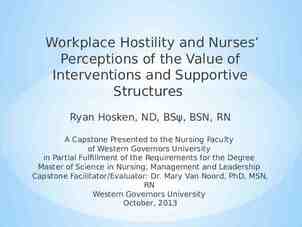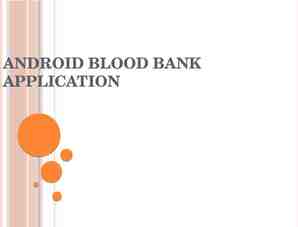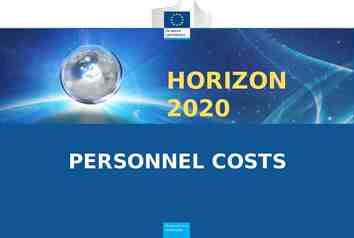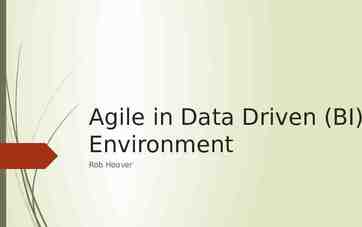International Conference on Biodiversity, Commercialization and
17 Slides9.44 MB

International Conference on Biodiversity, Commercialization and Sustainability of Wetlands Ir. C. Nugroho S Priyono, M.Sc Head of Working Group of Restoration Research Peatland Restoration Agency

Outline I. General Introduction on Peatland Restoration Agency Mandate, restoration target and peat restoration achievements II. Biodiversity in Peatland Cross-sectional vegetation zoning III. Commercialization Potential commodities in peatland IV. Sustainability Approach through 3R (Rewetting, Revegetation, Revitalization of Livelihood) Social Engineering

Peatland Restoration Agency Presidential Decree Number 1 Year 2016 Duty: Function: "Coordinating and Facilitating Peat Restoration“ In 7 provinces: Riau, Jambi, South Sumatera, West Kalimantan, Central Kalimantan, South Kalimantan, and Papua Coordination and strengthening policy Planning, control and cooperation Rearrangement of management of burned peat areas Mapping of Peatland Hydrological Units (PHU) Supervision in the construction, operation and maintenance of infrastructure on concession areas Socialization and education of peat restoration Rewetting infrastructure construction Zoning protection and cultivation functions Implementation of other functions assigned by the President Coordination: synchronization process to achieve a unity of action that is interdependent with one another and directs harmonious implementation. Facilitation: basically is making things easy or making a job can be done by the person in charge

Peatland Restoration Agency Working Areas and Targets Target areas: Central Government 8 % (Conservation Area) In 106 PHUs, 54 Districts 2016 - 2020 30% 20% 20% 20% 10% 2016 2017 2018 2019 2020 Based on area stakeholders Local Government 26 % (HP, HL, & other used areas) Concession holder 67 % (IUPHHK & HGU)

BRG Peat Restoration Approaches & Techniques 3R Nursery Planting Natural succession R1 Canal blocking Canal backfilling Peat well Water reserve basin (CCA) Rewetting Restoration of peat ecosystem R2 Revegetation Renewal organic matter R3 Revitalizatio n of Independent livelihood communities Land-based: pineapple cultivation, horticulture, coffee, livestock etc. Water-based: Fishery, pond Env-Services-based: Tourism, local commodity development

Implementation of Peat Restoration 2016-2019 No Province Target Nonconcession (Ha) Realization Nonconcession (Ha) Target Concession (Ha) Realization Concession (Ha) Plantation Forestry Plantation Forestry 1 Riau 103.688 79.845 216.879 676.725 137.034 - 2 Jambi 72.299 72.299 32.764 95.709 26.024 - 3 South Sumatra 122.723 102.105 117.601 416.559 43.445 - 4 West Kalimantan 54.630 44.882 53.988 41.285 20.670 41.285 5 Central Kalimantan 497.734 366.078 61.739 16.552 - - 6 South Kalimantan 6.307 6.307 50.180 - 5.576 - 7 Papua 34.867 0 4.372 - - 892.248 671.515 Total (Ha) - 1.784.353 274.034

Achievements of Implementation on Rewetting Infrastructure Construction and All Its Supporters 2016-2020 I. R1 through infrastructure of peat rewetting (IPG) Total of 23.015 units that have been built, consisting of: 6.938 canal blocks 15.668 peat wells 409 canals backfilling in non-concession areas with a total intervention area of 782.301 Ha II. R2 activities carried out through a demonstration plot scheme Covers an area of 1.113 Ha III. R3 community livelihood revitalization Total of 933 packages, consisting of: 413 packages of productive economic assistance 520 packages of community livelihood revitalization *Achievements until June 2020

Biodiversity in Tropical Peatland in Southeast Asia Tropical peatland is the most biodiverse of peatland environments, yet also amongst the most threatened (Page et al. 2006, Yule 2010, Turetsky et al. 2015). Southeast Asia’s tropical peat-swamp forests are important for biodiversity conservation, being home to at least 1,524 plants, 123 mammals, 268 birds, 219 fresh-water fish species and an unknown, but very high number of invertebrates not to mention a vast range of bryophytes, ferns and fungi. They also support many threatened species, including the Bornean orang utan, southern Bornean gibbon, Sumatran tiger and Sumatran elephant (Rieley 2016). Natural lowland peat swamps of Southeast Asia support forest vegetation forming a catena of types from their perimeter to centre, a change that is reflected in variations in canopy height, peat thickness, waterlogging and nutrient availability (Rieley 2016).

Cross-sectional Vegetation Zoning in Peatland River 1m 3m Organic matter 1m River Thickness Mineral Soil As an example of vegetation in the lake ecosystem from the research results of UGM, UNSOED, UNRI at Ulu Mamud Riau. Zone 1 covered by water lily (Hanguana sp.) Zone 2 trees Zone 3 smaller trees Zone 4 big trees

[Study Case] Biodiversity in Ulu Mamud, Riau As an example of biodiversity in the lake ecosystem (Tasik) from the research results of UGM, UNSOED, UNRI (2008-2019) at Ulu Mamud Riau: 52 species of trees 39 species of birds (5 of them are protected species) 9 species of dragonfly 29 species of plankton 16 species of microalgae 39-45 genera of nematodes etc

Potential Commodities in Peatland Poultry Paludiculture 1 Duck Livestock 1 Swamp buffalo 1 Sago 10 Cucumber 2 Sugar cane 11 Long beans 3 Corn 12 Cabbage 4 Pineapple 13 Eggplant 1 Climbing perch (Anabas testudineus) – Ikan Betok 5 Rice 14 Spinach 2 Striped snakehead (Channa striata) – Ikan Gabus 6 Superior rice 15 Chili 3 Gourami (Osphronemus goramy) – Ikan Gurami 7 Sweet potato 16 Aloe vera 4 Pangas catfish (Pangasius pangasius) – Ikan Patin 8 Cassava 5 Catfish (Clarias gariepinus) – Ikan Lele 9 Peanuts 6 Kissing gourami (Helostoma temmintri) – Ikan Tambakan Aquaculture

Paludiculture Model with Agrosilvofishery Approach Restoration Strategies 3R Agrosilvofishery REWETTING FOREST RESOURCES Drainage peatland 2R 2R 3R REVEGETATION Burned peat area in 2015 2R REVITALIZATIO NSource of livelihoods Forestry cultivation (Silvo) SILVO AGRO FISHER SILVO AGRO Y AGRICULTURAL LAND RESOURCES Agricultural cultivation (Agro) SILVO FISHERY AGRO FISHERY 3R Integration and Agrosilvofishery Cultivation in an area of peatland AQUATIC RESOURCES Aquaculture (Fishery)

Concept and Implementation of Paludiculture Model with Agrosilvofishery Approach Business Land (rice fields, plantation crops, forestry plants Ditch pond (Semi intensive fish farming) Rice fields (Vegetable and fruit crops) Paludicul ture Model Concept Paludicultu re Model Implementa tion Development of local peat swamp forest commodities as an alternative livelihoods to increase the value of forests for the community's economy with the principle of sustainability

BRG Peat Restoration Approaches Education Strategy Main Activity “3R” Rewetting Canal blocking Canal backfilling Peat well Water reserve basin (CCA) Revegetation Nursery Planting Natural succession Revitalization of Livelihoods Land-based: pineapple cultivation, horticulture, coffee, livestock etc. Water-based: Fishery, pond Env-Services-based: Tourism, local commodity development Elementary school student education Peat farmer field school (SLPG) Peat literacy Socialization Peat restoration socialization Da'i cares for peat Islamic boarding school socialization Church cares for peat Participation Peat care village (DPG) Partnership Complaint DPG partnership Paralegal

525 Peat Care Villages (DPG) Riau 123 villages Jambi 44 villages West Kalimantan 90 villages South Sumatra 73 villages Central Kalimantan 147 villages *Data since 2016 until June 2020 South Kalimantan 36 villages Papua 12 villages

The Role of The Community on Peatlands 2016 - June 2020 period National/7 Provinces Elementary school teacher Paralegal Pastor cares for peat DPG Facilitator Farmers cares for peat Community Group Members Women farmers and craftsmen Da'i cares for peat Food artists

Thank You






